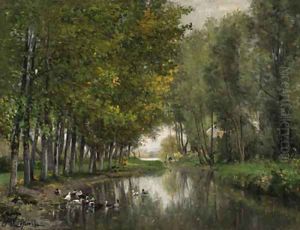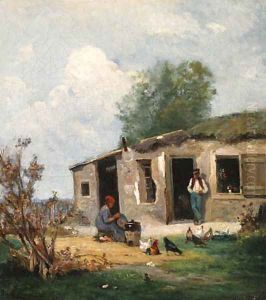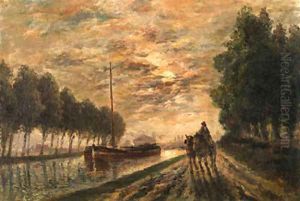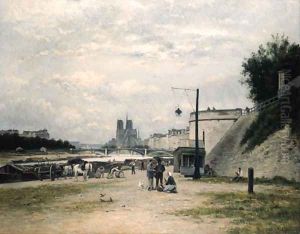Stanislas Victor Edouard Lpine Paintings
Stanislas Victor Edouard Lépine was a French artist known for his landscapes and city scenes. Born on October 3, 1835, in Caen, Normandy, he grew up in a period of great transformation in French art, with the emergence of Realism and early developments leading to Impressionism.
Lépine was initially trained as a porcelain painter in his hometown, but he moved to Paris to pursue a career in fine arts. His early work reflects the influence of traditional landscape painters such as Camille Corot, whom he admired. However, Lépine's style evolved as he became more exposed to the burgeoning artistic movements of the time.
He is best known for his depictions of the Seine River and the bustling life of Paris, capturing the changing effects of light and atmosphere much like the Impressionists. Yet, Lépine maintained a subtler, more nuanced palette than some of his contemporaries. His brushwork was delicate, and he often worked in a range of grays and blues, earning him the nickname 'the painter of the waters' for his ability to render water surfaces with sensitivity and a sense of immediacy.
Despite his talent, Lépine struggled with recognition during his lifetime. He was friends with leading artists such as Claude Monet, who admired his work. Monet even named his son after Lépine in tribute. Lépine exhibited at the Paris Salon, the official art exhibition of the Académie des Beaux-Arts, but he only began to gain more consistent acclaim after being accepted by the Salon jury in 1859. His work 'Pont de la Tournelle, Paris' from 1870, is one of his most celebrated pieces and showcases his mature style.
Lépine's work eventually gained more recognition, particularly after his death when art critics and historians began to appreciate his role in the transition between traditional landscape painting and Impressionism. Lépine died on September 28, 1892, in Paris. Today, his works can be found in many major museums, including the Musée d'Orsay in Paris, and continue to be appreciated for their quiet beauty and technical skill.



